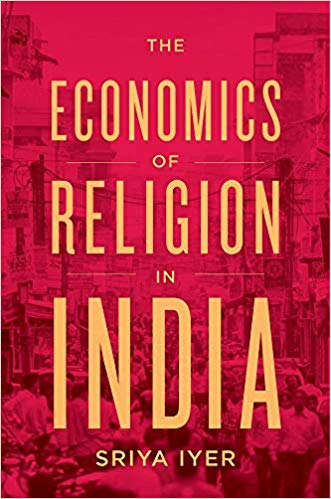Religion in India with all its complications has been a subject of study for social scientists from a range of disciplines including sociology, history and politics. Iyer underlines an economic approach to the study of religion which ‘involves the application of economic theory and statistical methods to evaluate the role of religion in society at both micro and macro levels’(p. 11).
At the macro level she covers a broad range of issues including the relation between religious conflict and economic growth, the provision of religious and non-religious services by religious organizations in a religious market ‘in response to income inequality and the competition for adherents’ (p. 73), the role of reputations and networks in relation to religious marketing; and, inequalities in education, employment and credit on the basis of religion. While there is less focus on the micro-level relation between economics and religion, a chapter on the ‘modern Madrasa’ looks at ‘innovation’ especially at the level of the curriculum and draws on interviews with Muslim clergy.
For the broad themes around religion and economics Iyer draws on an interesting range of datasets. For example, using the World Values Survey data (1990-2001) she concludes unsurprisingly that in India ‘people are religious, attend places of worship reasonably often, and believe in the existence of God’(p. 41). A comparison of the Indian figures with the global average in this internationally comparative dataset might have provided an important context to these results. Further, since the WVS also has other demographic variables, and a variety of questions on religious attendance and observance, a more nuanced analysis of religion and religiosity (a more complicated concept which could be operationalized through the range of questions in the WVS) would have allowed for a focus on how these patterns have changed over time.

